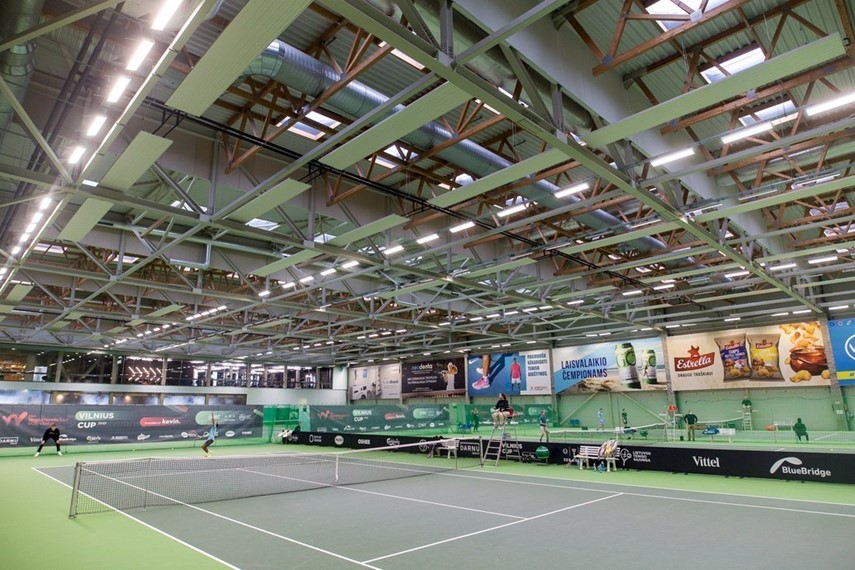The road to reaching the top of the world in tennis is a very difficult journey. An early and important highlight for any professional player is when he or she qualifies for his or her first ATP or WTA tournament.
In this article, we are going to focus on the important tournaments in any young professional player’s journey known as the Futures and Challengers tournaments. These tournaments do not bring glory, significant prize money or points, yet they are critical in the advancement of all young players.
Let’s dive into the Futures and Challengers tournaments, as well as the differences between the Futures and Challengers tournaments.
What is the Future of Tennis?

Futures, officially known as the ITF Men’s World Tennis Tour or the ITF Women’s World Tennis Tour, is the lowest level tournament where a player pursuing a professional tennis career can compete. The ITF (International Tennis Federation) describes the tour as follows:
The ITF Men’s World Tennis Tour provides entry-level professional tennis tournaments and provides a pathway between the ITF Junior World Tennis Tour and the elite levels of men’s professional tennis. The results of ITF tournaments are incorporated into the ATP Ranking, which enables professionals to progress to the ATP Challenger Tour and ATP Tour, and ultimately the Grand Slams.
The Tour offers approximately 550 tournaments across 70 countries and incorporates two prize money levels of tournaments: $15,000 and $25,000.
Any player who has a recorded ranking, that is, a player who is registered with the ITF, can participate in the Futures tournaments. Futures tournaments are organized by the ITF and these tournaments are divided into several categories. The strongest category is represented by tournaments from the ITF World Tennis Tour 1000, followed by tournaments from the 500 and 250 series.
Both the Association of Tennis Professionals (ATP), which is the governing body for men’s professional tennis, and the Women’s Tennis Association (WTA), which is the governing body for women’s professional tennis, incorporate results from Futures tournaments into their rankings.
This allows players to earn points and advance their world rankings. Players whose rank is between 150 and 900 in the world typically play in these tournaments. There are over 1000 tournaments each year around the world for men and women, including over 500 for each of them.
The ITF also organizes competitions for juniors, where players from 12 to 18 years old compete.

Most players spend their entire careers at this level, with only the very best advancing to the highest levels of professional tennis. Accordingly, the prize money is low and the players do not win too many points in these tournaments. Generally, the winner of one of the Futures wins 15 to 25 points, and the total prize money in these tournaments is between $15,000-$25,000.
Novak Djokovic has been extremely vocal in championing the rights of players at this level and highlighting that most of these players are unable to make a living on this professional circuit. This is because being a professional tennis is quite expensive and includes expenses such as travel to tournaments, coaches and trainers.

ATP Challenger Tour – Level between Futures and ATP tournaments
Challenger tournaments, officially known as the ATP Challenger Tour for men and the WTA 125 for women, are tournaments that are on a stronger level than the Futures tour. The Challenger tour is the second highest level of tennis behind the ATP tour.
However, there is a vast difference between the prestige of the ATP and WTA tour and the Challenger tour. While we sometimes see famous names the Challengers, such as a battle earlier this year between Andy Murray and Stanislas Wawrinka, these tournaments are typically the place for promising young tennis talents to gain the necessary experience as they attempt to advance to the ATP or WTA tours.

The players who play in these tournaments are ranked better than those who play in the Futures, but they are typically far from the world’s top in most cases. Players who are ranked outside the top 200 or 300 players in the world will often have to play qualification rounds to qualify for these tournaments.
Not surprisingly, Challenger tournament winners are awarded more cash prize money and ranking points than Futures tournaments but less than ATP or WTA tournaments.
For instance, ATP Challenger tournaments typically award between 50-125 points to the victor, with the five most prestigious Challenger tournaments offering 175 points to the winner.
In comparison, the lowest level ATP tournaments award 250 points to the winner. When considering that the current 100ranked men’s player in the world has 613 ATP points, it is clear that a player who has significant success on the Challenger tour can earn a spot in the ATP or WTA tours.
However, most players on the Challengers tour will never reach the highest level of tennis and never have the opportunities to play in the ATP or WTA tours.

Credit: 2023 ATP Tour – Murray triumphs in Challenger Aix En Provence

Credit: 2023 ATP Tour – Sumit Nagal – The first Indian player to win two challengers on European clay in the same year
Thanks for reading along, have a nice day.







